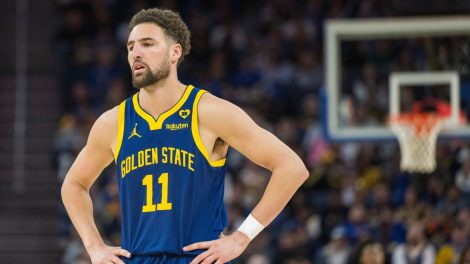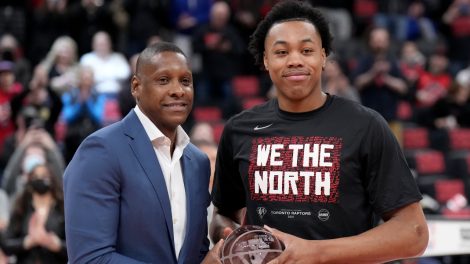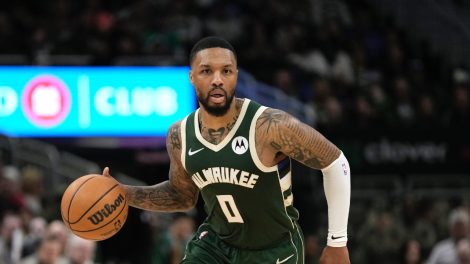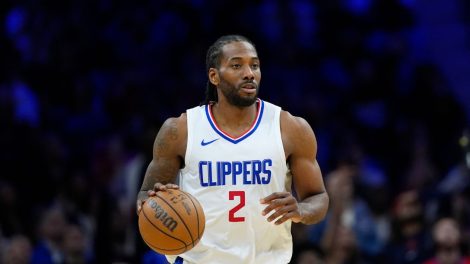Sometimes being in a position of strength means not always using it. Sometimes, even when having the leverage required to win a negotiation, the smart play is to allow the middle ground to emerge.
Who knows how contract talks between Kyle Lowry and the Toronto Raptors went, exactly. We may never be entirely sure.
But we do know – according to multiple sources – that as recently as a few weeks ago the Raptors point guard believed he was in position to get multiple ‘max’ offers when he became a free agent after the clock struck midnight Friday.
Even if the Raptors weren’t prepared to go to the wall and give Lowry the five years and $201 million the collective bargaining agreement said they could, Lowry felt another couple or three teams would be willing to pay him $149 million over four years – the most teams other than Toronto could offer – forcing the Raptors’ hand.
How did four years with some guaranteed money in year five sound? To Lowry it probably sounded like victory.
But even before the clock struck it was clear Lowry’s optimism was misplaced. The Philadelphia 76ers, Lowry’s hometown team, drafted a point guard, Markelle Fultz, No. 1 overall. According to sources, they were never really in the market for a 31-year-old on a long-term deal, even though Lowry and former Raptors general manager Bryan Colangelo go way back. Regardless, they were out of the running.
The Houston Rockets traded for Chris Paul. Lowry was no longer in the picture. The Utah Jazz grabbed Ricky Rubio while the Minnesota Timberwolves landed Jeff Teague – both younger and cheaper. The San Antonio Spurs re-signed their own free agent, Patty Mills, opting for consistency rather than having to reshape their roster to make room for Lowry. Very quickly the top jobs were filled and there was George Hill – a very good option for any of the other positions – lurking around, potentially driving Lowry’s value down even further.
There was a conspicuous absence of chatter about teams lining up to meet with Lowry because there were no meetings being lined up. What a sinking feeling that must have been.
The three-time all-star who got heat from friend and teammate DeMar DeRozan for not playing in Game 3 or 4 of the Raptors’ playoff series against the Cleveland Cavaliers due to an ankle injury, who missed the first two practices after the all-star break and then had wrist surgery, who seemed to be letting his cantankerous side shine through more often, perhaps believing he was halfway out the door, was suddenly out of options. Unless he wanted to play for the New York Knicks for a lot less than $30 million a year.
Raptors president Masai Ujiri deserves no medals for figuring this all out; for letting Lowry shop around and see if there was a better deal out there. It was simple supply and demand: there were more good point guards than there were teams willing to pay the kind of money Lowry was looking for in his last big payday.
So what to do?
Let Lowry sweat and bring him back for three years and $75 million (and yes, NBA problems are a very unique set of problems)? Let the low ball offers roll in and come to the rescue and get him even ‘cheaper?’
That would be one approach. But Ujiri appears to have chosen another path. Even as the market began cooling it was believed Lowry had set his floor at $30 million a year. It has a nice ring to it; you must admit.
The Raptors were heading for tax territory and the roster inflexibility that comes with it anyway, so why not give Lowry the number he wanted?
But in return Toronto wouldn’t go past three years. That was the decision the Raptors reached internally. Give this core a couple more years in a flimsy Eastern Conference, but don’t saddle the payroll with the kind of cap-killing deals that extend the inevitable teardown and slow the rebuild.
All along there wasn’t much debate that Lowry – inarguably a top-20 player in the league and maybe even one of the Top 10 – was worth a huge commitment over the next two years. The concern was always paying him big money in years three and beyond. The only person who felt good about Lowry getting paid north $40 million at age 37 was Lowry.
That’s how we got here: Lowry gets his face-saving $30 million annually and the Raptors live to imagine a salary structure without a massive, ticking time bomb sitting on top of them two or three years down the road.
Lowry got his money, if not his term, and the Raptors get two more elite seasons, maybe three, without having to worry about the typical physiological decline.
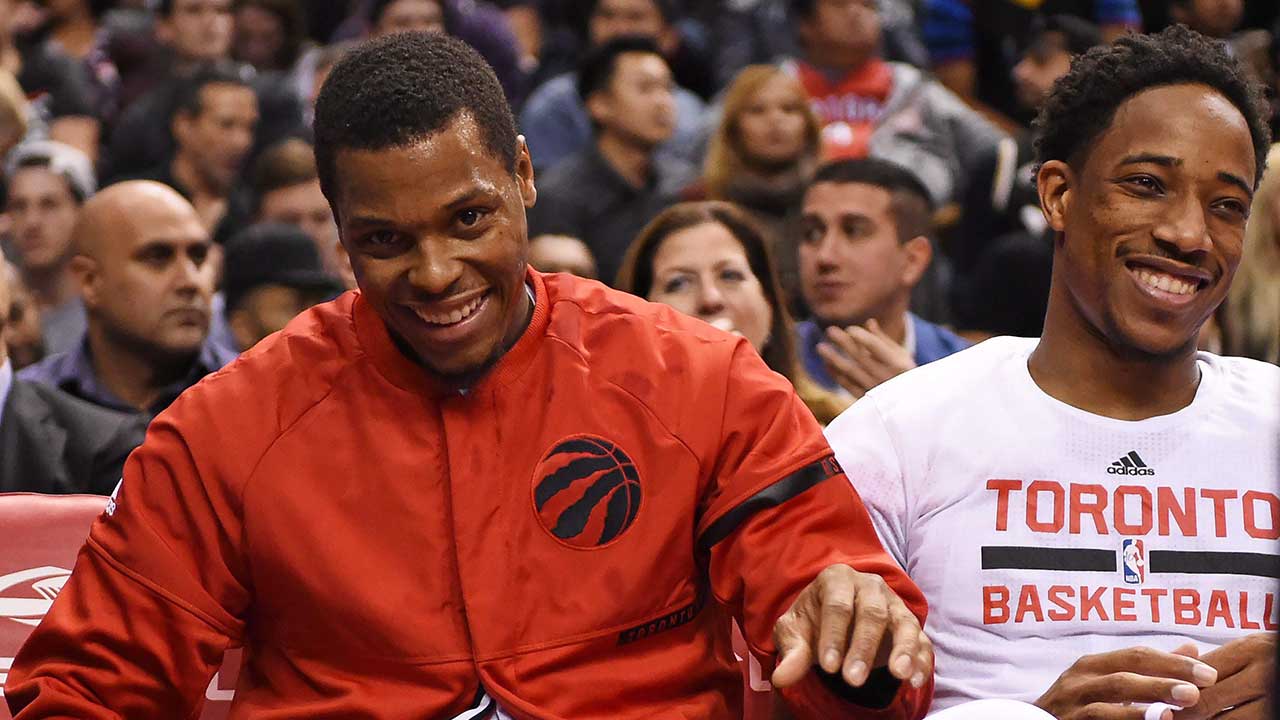
Meanwhile, for all those clamouring for a rebuild? It’s coming. You can set your watch by it. Summer of 2019; February 2020 at the latest.
That’s when the sell-off will begin and the future will come into view. That’s when losing will be good, winning bad. That’s when the selling of hope begins in earnest.
Until then the Raptors will be squeezing as much juice as possible from the happy accident that is the greatest era in franchise history. Will it yield an NBA Finals appearance? A title?
Odds are no. But for the next two years at least the Raptors will be trying to make that happen, trying to get in position to get lucky. There are worse situations to be in.
Last summer the Raptors signed DeRozan to a five-year contract with a player option for the 2020-21 season. The expectation is at age 29, he’ll exercise it and look for one more big deal.
Not by coincidence, Lowry and Serge Ibaka are now signed through the 2019-20 season. Ibaka’s deal, also signed Sunday, pays him $65 million over the three years.
It’s a lot of money. It almost necessitates Ujiri moving out some contracts. Lowry and Ibaka’s newfound riches mean at least two of Cory Joseph, DeMarre Carroll and Jonas Valanciunas likely being traded for minimal return not necessarily to limit the luxury tax penalties – although that wouldn’t hurt – but also to have a shot at using the full mid-level exception ($45 million over five years) or the bi-annual exception ($7 million over two years) to fill out the roster.
[snippet id=3360195]
Given P.J. Tucker’s decision to spurn a three-year, $32-million offer from Toronto to sign with the Houston Rockets for comparable money and Patrick Patterson and the Raptors mutually parting, there are holes.
But the biggest holes never opened up. Not signing Lowry would have meant not signing Ibaka – what would be the point? It would have meant diving into tanking in an era where as many as 10 teams might be racing to the bottom ahead of you, all chasing jewels in a 2018 draft that doesn’t project to be all that deep.
That was Lowry’s ultimate leverage. The Eastern Conference is weak and has gotten weaker this past week, and rebuilding is painful and uncertain.
Bringing Lowry back means keeping the dream alive, even if the alarm clock is already set on it. But making dreams come true in the NBA costs money, no matter what. The question is only how much.
In this case Ujiri wasn’t ready to break up the band. He didn’t feel the time was right and if it cost him a few million more than he could have spent to keep Lowry to keep it rolling, so be it.
In most negotiations someone blinks. Someone caves. In this one Lowry did. He never would have bet he was only getting a three-year deal. But Ujiri, holding the hammer, decided it was in the Raptors’ best interest that he blink, too.
[relatedlinks]





